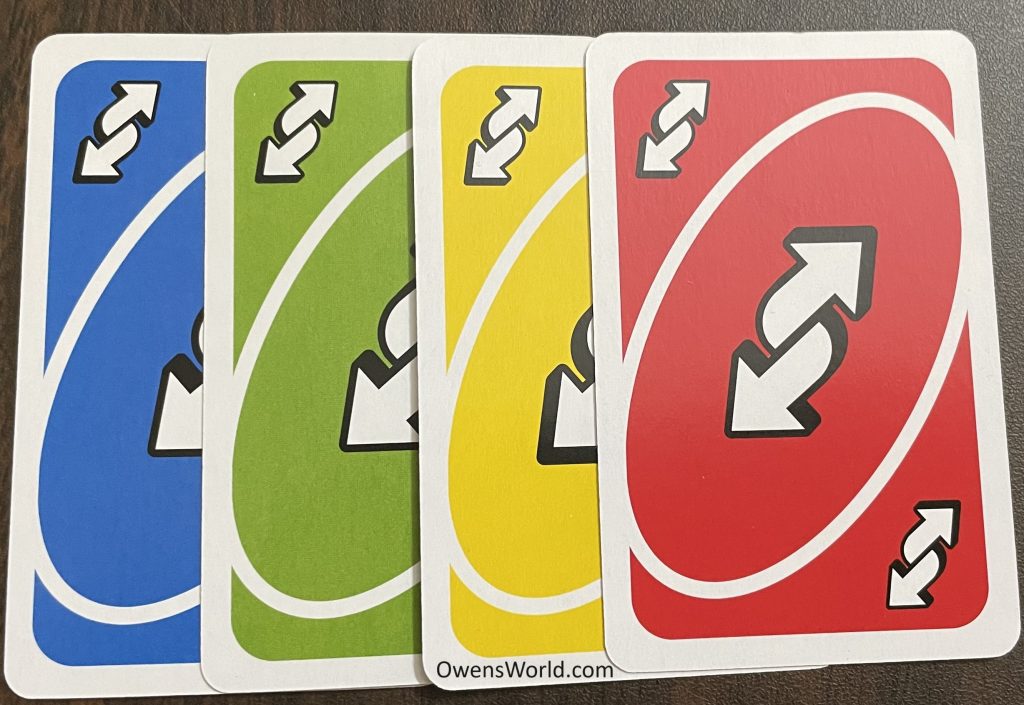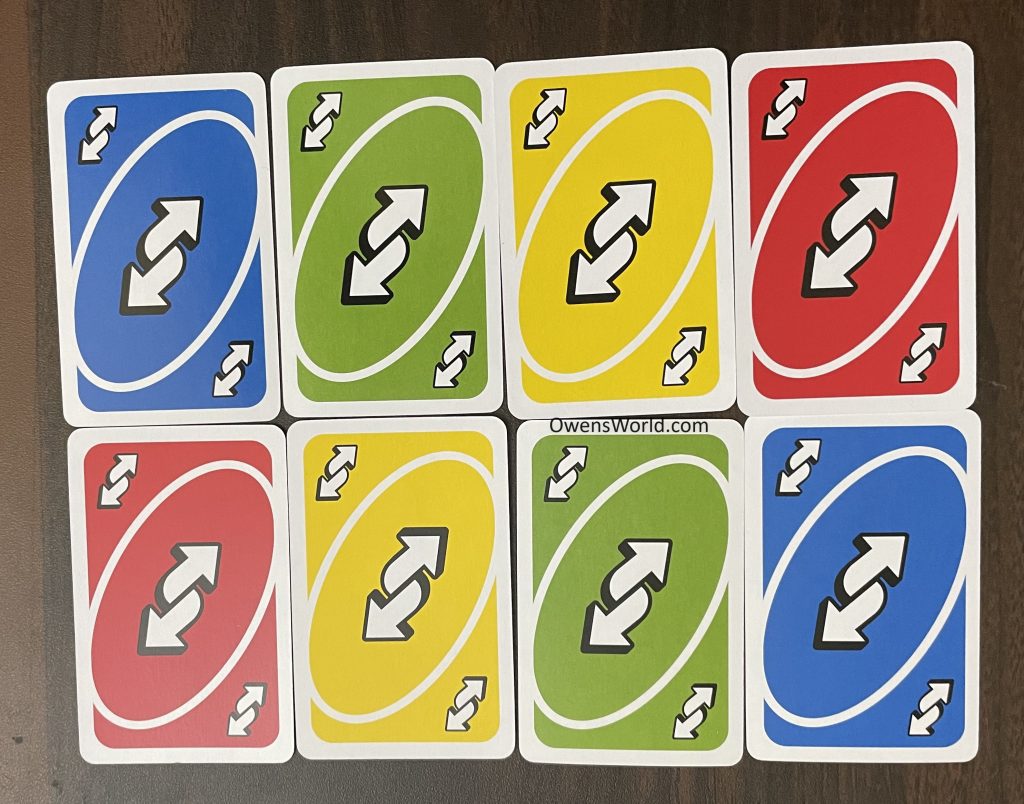Uno Reverse Card Rules
Uno is an iconic card game, played globally among friends and family. One of the standout cards of this game, due to its strategic importance, is the ‘Reverse Card’, which can change the course of the game instantly. Let’s delve into its meaning, rules, and functions.

Official Rules for the Uno Reverse Card
- Playing the Card: A Reverse Card can be played either on another Reverse Card or on any card with a matching color. However, 2 reverse cards cannot be played at once by the same player. If the house rules, allow playing 2 reverse cards at once, it will reverse the direction back to its original state
- Effect: When a Reverse Card is played, the direction of play is immediately reversed. For example, if play was moving clockwise, it will now move counterclockwise and vice versa.
- Card Appearance: The Reverse Card features two curved arrows pointing in opposite directions.
- Number in a Deck: Each color (Red, Yellow, Green, and Blue) has 2 Reverse Cards, making a total of 8 in a standard Uno deck.
Functions and Uses of the Reverse Card in Uno
The Reverse Card can serve multiple strategic purposes:
- Changing the Direction of Play: The most direct function is to reverse the order of play, which can help if the next player has fewer cards.
- Avoiding Penalties: If you anticipate the next player has a penalty card (like a Draw Two or Wild Draw Four) aimed at you, a Reverse Card can prevent them from playing it on their turn.
- Teaming Up: In friendly games, if playing in teams or partnering unofficially with a friend, you can use the Reverse Card to let them play again, especially if they have a card to harm an opponent.
- Tactical Play: If you know the preferences or habits of the player before you, the Reverse Card can be used to control the game’s flow or to set up a more advantageous game situation.
Uno Reverse Card Rules for 2 Players
In a 2-player Uno game, the Reverse Card acts a little differently:
- Function as a Skip: When a Reverse Card is played, it essentially skips the other player’s turn and the player who played the Reverse gets another turn. This reflects the changed dynamic of a 2-player game.

Alternate Rules
While the official rules provide a foundation, many players introduce house rules to spice things up. Here are some popular alternate rules involving the Reverse Card:
- Stacking: Some allow stacking of Reverse Cards. If one player plays a Reverse, the next can play another if it’s the same color, reversing the direction again.
- Double Play: Some house rules might allow players to play two Reverse Cards of the same color simultaneously, but this is not a standard rule.
- Continual Reverse: Every Reverse Card played forces the next player to play another Reverse or draw a card.
Always ensure everyone is clear on the rules before starting a game!
Frequently Asked Questions
Can you reverse a +2?
In official Uno rules, a Reverse Card can’t be directly played in response to a +2 card. The next player must draw two cards and forfeit their turn. After this, a Reverse Card can be played if it matches the color.
Can you play 2 reverse cards in Uno?
In the official rules, players play one card at a time. However, some house rules allow simultaneous play of two Reverse Cards of the same color, reversing the direction back to its original state.
Can you win on a reverse card in Uno?
Yes, you can. If a Reverse Card is the last card in your hand, you can play it and win the round, provided it’s a valid play.
Can You Put a Reverse on a Draw 4 in Uno?
According to the traditional rules, a Reverse Card cannot directly counter a Wild Draw Four card. The player affected by a Wild Draw Four must draw four cards and forfeit their turn.
Conclusion
In conclusion, while the Uno Reverse Card might seem straightforward, it’s a strategic tool in the game. Its rules can be molded to fit house rules, making each Uno game unique. Remember, the key is always to communicate and agree on the rules before starting, ensuring a fun and dispute-free game!